Introduction
Cosmetic dentistry has seen tremendous advancements in recent years, and one of the most exciting innovations in the field is the introduction of 3D printing. While 3D printing has revolutionized industries such as manufacturing and medicine, it is now making waves in the dental world, particularly when it comes to creating dental veneers. Veneers are thin shells of material placed over the front surface of teeth to improve their appearance, and they have long been a popular choice for individuals looking to enhance their smile. Traditionally, the process of creating veneers involves several steps, including molds, laboratory work, and multiple dental visits. However, with the rise of 3D printing technology, the production of veneers has become faster, more efficient, and more precise.
This article will explore how 3D printing is transforming the way we get veneers, including the benefits it offers over traditional methods, how it improves the accuracy of the process, and how it streamlines the entire procedure. By the end of this article, you will have a clearer understanding of how 3D-printed veneers work, their advantages, and why they might be a better option for your cosmetic dental needs.
How 3D Printing Works in Dental Restorations
3D printing, also known as additive manufacturing, is a technology that creates three-dimensional objects layer by layer from a digital model. In the context of dental restorations, 3D printing allows for the precise fabrication of veneers, crowns, bridges, and other dental devices.
The Process of Creating 3D-Printed Veneers
The first step in creating 3D-printed veneers is a digital scan of the patient’s teeth. This scan can be done using an intraoral scanner, which captures highly detailed images of the teeth and gums, creating a 3D digital impression. This digital model is then sent to a computer-aided design (CAD) system, where the veneer is designed to fit perfectly over the patient’s natural teeth. The CAD system allows the dentist to make precise adjustments, ensuring that the veneers will not only look natural but also fit comfortably and function effectively.
Once the design is complete, the digital file is sent to a 3D printer. The printer uses advanced materials, such as resin or ceramics, to build the veneer layer by layer. Each layer is hardened by light or heat, depending on the material being used. The result is a highly accurate, customized veneer that is ready for placement in a fraction of the time it would take with traditional methods.
The 3D printing process eliminates the need for traditional molds and the time-consuming steps typically associated with veneer creation. It also allows for faster turnaround times, with some 3D-printed veneers being ready in as little as a few hours or days, depending on the complexity of the design.
Benefits of 3D-Printed Veneers Over Traditional Methods
While traditional methods of creating veneers have been effective for many years, 3D printing offers several significant advantages. These benefits make 3D-printed veneers an appealing option for individuals looking to enhance their smiles.
1. Improved Precision and Accuracy
One of the primary advantages of 3D printing in veneer production is the enhanced precision it provides. Traditional veneer creation involves taking physical impressions of the teeth using putty or molds, which can sometimes result in inaccuracies due to human error or changes in the material during the setting process. With 3D printing, however, the digital scan of the patient’s teeth is highly accurate, and the design is based on this precise digital model.
The CAD software allows for minute adjustments to be made to the design, ensuring that the veneer fits perfectly and aligns with the natural contours of the teeth. This accuracy reduces the chances of the veneer requiring additional adjustments during the placement process, leading to a more comfortable and seamless fit.
2. Faster Turnaround Time
Traditional veneer creation can take several weeks due to the need for multiple visits, laboratory work, and waiting for the veneer to be fabricated. In contrast, 3D printing significantly shortens this timeline. With 3D printing, the design and production of veneers can be completed in as little as a few hours or days. This allows patients to receive their veneers much more quickly, often in a single visit, which can be particularly beneficial for individuals with busy schedules or those in need of a quick cosmetic enhancement.
In some cases, dental offices with in-house 3D printers can even print veneers while the patient waits, offering a truly convenient and time-saving option.
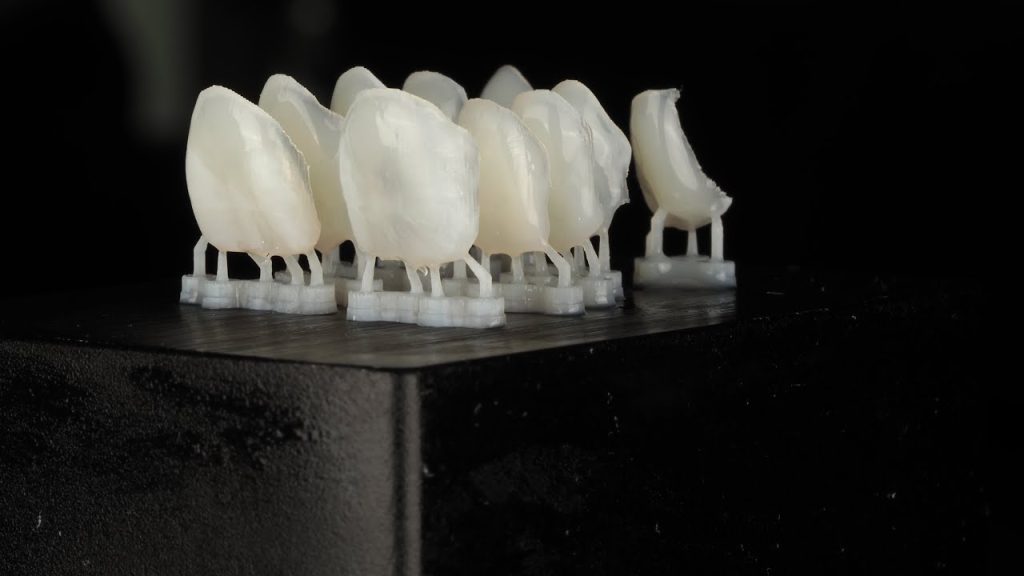
3. Cost-Effective Solution
While the initial cost of purchasing 3D printing equipment may be high for dental practices, the long-term savings can be significant. Traditional methods often require multiple appointments, laboratory work, and additional materials, which can drive up the cost of veneer production. With 3D printing, the need for these extra steps is eliminated, making the process more efficient and cost-effective for both the dentist and the patient.
Additionally, the streamlined process reduces the likelihood of errors, which can result in additional costs for adjustments or remakes. This overall reduction in time and labor can make 3D-printed veneers a more affordable option for many patients.
4. Customization and Personalization
One of the most significant advantages of 3D-printed veneers is the ability to customize and personalize the design to meet the patient’s specific needs. Traditional veneers are often fabricated based on general templates or molds, which can sometimes result in a less-than-perfect fit or appearance.
With 3D printing, however, the dentist has complete control over the design process. The digital model allows for precise adjustments to be made to the size, shape, color, and contour of the veneers, ensuring that they match the patient’s natural smile. The customization options are virtually limitless, allowing patients to achieve the exact look they desire, whether it’s a subtle enhancement or a dramatic transformation.
5. Minimally Invasive
In many cases, 3D-printed veneers can be designed to require minimal tooth reduction, which makes the procedure more conservative and less invasive. Traditional veneers often require the removal of a significant amount of tooth enamel to accommodate the veneer, which can sometimes lead to sensitivity or other issues. With 3D printing, veneers can be made thinner while still maintaining strength and durability, meaning less tooth structure needs to be altered.
This minimally invasive approach makes 3D-printed veneers a great option for individuals who want to improve their smile without compromising the integrity of their natural teeth.
6. Durability and Longevity
3D-printed veneers are made from high-quality, durable materials that can withstand the wear and tear of daily use. The materials used in 3D printing are often stronger and more resilient than those used in traditional veneers, which can help extend the life of the veneers. With proper care, 3D-printed veneers can last for many years, providing a long-term solution for individuals looking to enhance their smile.
How 3D Printing Streamlines the Process and Improves Accuracy
The key to 3D printing’s success in the dental field is its ability to streamline the process and improve accuracy. Traditional veneer creation involves several steps, including taking physical impressions, sending those impressions to a laboratory, and waiting for the veneer to be fabricated. This process can be time-consuming, and errors during any of the steps can result in delays or the need for remakes.
3D printing eliminates the need for physical molds, instead using digital impressions to create a precise 3D model. This model can be adjusted in real-time, allowing for faster revisions and greater customization. The printer then produces the veneer layer by layer, ensuring an exact fit and reducing the chances of human error. This not only speeds up the process but also improves the overall quality and precision of the veneers.
Additionally, the use of digital technology makes it easier to track and store patient records, providing a more organized and efficient workflow for dental practices.
Conclusion
3D printing has the potential to revolutionize the way veneers are created, offering numerous advantages over traditional methods. From improved precision and faster turnaround times to cost-effective solutions and enhanced customization, 3D-printed veneers are changing the landscape of cosmetic dentistry. The ability to design and produce veneers with such accuracy and efficiency makes them a highly attractive option for patients seeking a beautiful, natural-looking smile.
As 3D printing technology continues to evolve, we can expect even more advancements in the field of cosmetic dentistry. If you’re considering veneers for your smile makeover, it’s worth exploring 3D-printed options and consulting with your dentist to see if this modern approach is right for you.








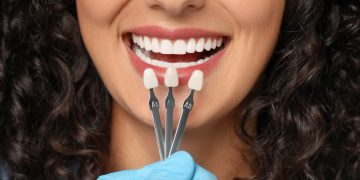
















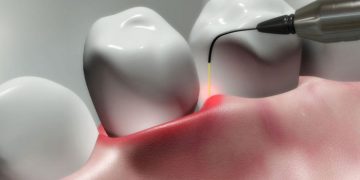


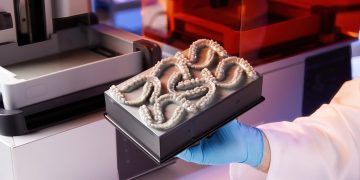

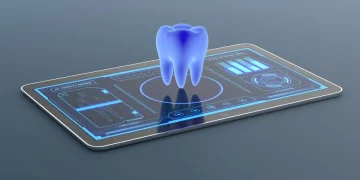
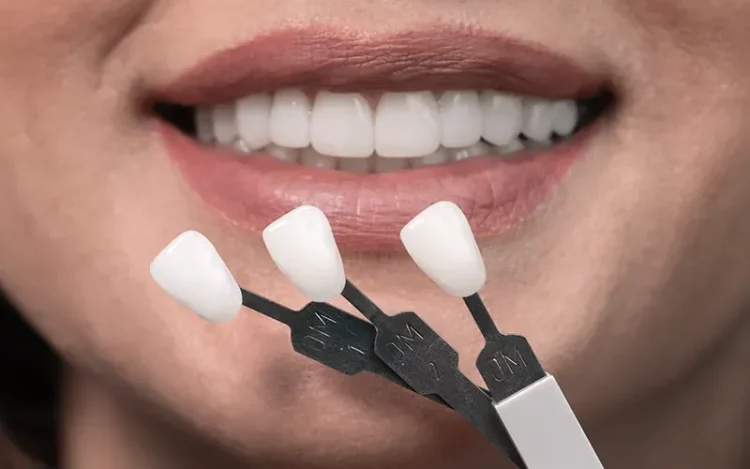













Discussion about this post